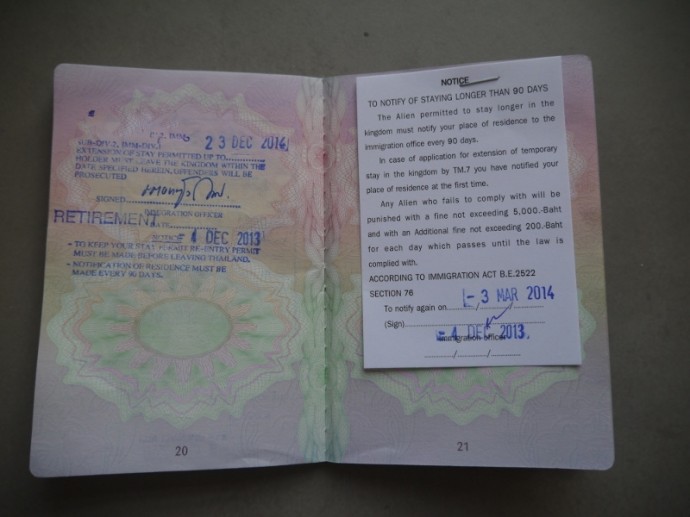Many foreigners want to stay in Thailand long-term, and there are a few ways to achieve this. If you’re over 50 and have income or savings that meet the visa requirements, then applying for a Thailand Retirement Visa is one of the easiest options. Below I’d like to walk you through the steps for how to get a Retirement Visa for Thailand
The very first step is obtain a non-immigrant visa, which you can either get from your home country or from within Thailand. See my earlier post about getting a Non-Immigrant Visa in Thailand.

**Important to Note:**
what’s referred to as a Retirement Visa isn’t actually a visa at all. It’s just permission to extend your stay in the country based on retirement. That’s why you need the Non-Immigrant Visa first. But everyone calls this a Retirement Visa, so I’ll stick with that terminology here.
Thailand Retirement Visa Requirements
To qualify for a Thailand Retirement Visa you need to meet the following requirements:
1. Already hold a Non-Immigrant Visa;
2. Be 50 years or older;
3. Have proof of income of at least 65,000 baht ($2,200) per month; or
4. Deposit at least 800,000 baht ($27,000) with a bank in Thailand. This balance has to be maintained for at least 3 months at date of application. For the first application, the deposit only needs to be there for 60 days; or
5. A combination of annual income and savings of at least 800,000 baht.
Applying For A Thailand Retirement Visa
If you meet the requirements, then you’re good to go. Here is what you need to take with you to the Immigration office:
1. A completed TM7 form with a pasted photo;
2. Copies of relevant passport pages (picture page, Non-Immigrant Visa page, entry stamp page, departure card);
3. Proof of income or savings;
– if using the income method you need a letter from your Embassy confirming your annual income (also take the proof of income with you in case you are asked for it);
– if you’re using the savings method you need a letter from your bank confirming the balance on the day of your application and also copies of all pages of your savings book. I go to the bank first thing in the morning to get the letter and then to Immigration;
– you’ll need both the above if you’re using the combined income and savings method. If using this method, there isn’t a minimum amount of time that the savings need to be in the bank;
4. Proof of address – letter from hotel or copy of rental agreement;
5. 1,900 baht ($63) in cash;
6. Your passport.
Take all the above to your local immigration office and the Retirement Visa (permission to extend your stay) with be issued.
Re-Entry Permit for Retirement Visas
Once you have the Retirement Visa, you must get a re-entry permit if you wish to leave the country and return again. If you leave without getting one, your permission to stay will be cancelled when you leave, and you’ll have to start the whole process again when you return. Re-entry permits are available from your local immigration office at a cost of 1,000 baht for single or 3,800 baht for multi. If you’re planning to leave the country at all during the year I’d suggest you get a re-entry permit at the same time that you apply for your Retirement Visa. It will save you an extra trip to the immigration office. You’ll need form TM8.
90-Day Reporting | Thailand Retirement Visa
With a Retirement Visa you also need to report your address to the immigration office every 90 days that you’re in the country. You need to do this even if you don’t change your address. If you leave the country and return, the 90 days starts again from when you arrive back. If you fail to report your address on time you will be fined 2,000 baht, or more if you’re arrested. With most immigration offices, including Bangkok, this reporting can be done by post. You’ll need form TM47.
Immigration Website Details
Thailand Immigration Website: www.immigration.go.th.
Click here to know how to wire money to/from Thailand




